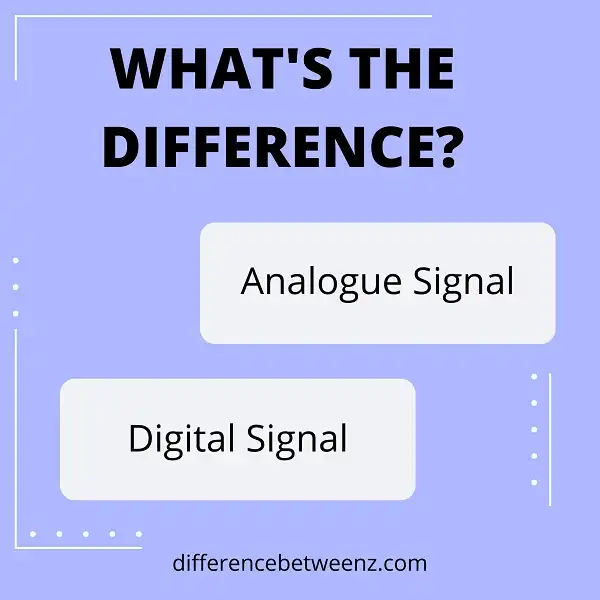Analogue vs. Digital Signal
Difference between analogue and digital signal: – Both analog and digital signals are used to transmit information, usually through electrical impulses. In both cases, information, whether by means of radio, television … is propagated by means of electrical signals; however there are differences between analog and digital signals.
Difference between analogue and digital signal
If you want to know what difference between analogue and digital signal is, simply continue reading, because below we explain it to you.
Analog
The analog signals are continuous and represented with physical measurements. They are expanded by sine waves and can only be read by devices capable of interpreting analog signals. They are more suitable for audio and video transmission.
Also, the processing of the analog signals can be carried out in real time and consumes less bandwidth compared to the processing of digital signals. In addition, the cost is lower and in the case of sound, some assure that the analog recordings are more faithful than the digital ones. However, some disturbances in analog signals may cause information to present irreparable errors, unlike digital signals in which errors can be more easily corrected by replacing, erasing or inserting symbols.
Another disadvantage of analog signals, when compared to digital signals, is that when you try to copy the information, the copies are not as good as the original; something that does not happen with digital signals can be copied indefinitely without their quality varying.
Currently, many devices have the facility of working analog and digital signals. Microphones and speakers are good examples of analog devices, but even though this type of technology is cheaper, there are many limitations as to the amount (the size) of data that can be transmitted at any given time.
Digital
Digital signals, contrary to analog signals, carry the information through binary code (0 or 1); where each bit is a representation of two different amplitudes. Digital signals are not continuous, but discrete and generated by digital modulation. In this case the waves are not sinusoidal, but square.
Some examples of digital devices or devices are computers, CDs, DVDs, among others. When information is transmitted through digital signals, it is less likely to deteriorate or be affected by noise as compared to analog signals. Finally, although the cost of digital technology is much higher compared to analog, it has been imposed on the market; as it offers more facilities to users who are in need of sharing large amounts of information.


